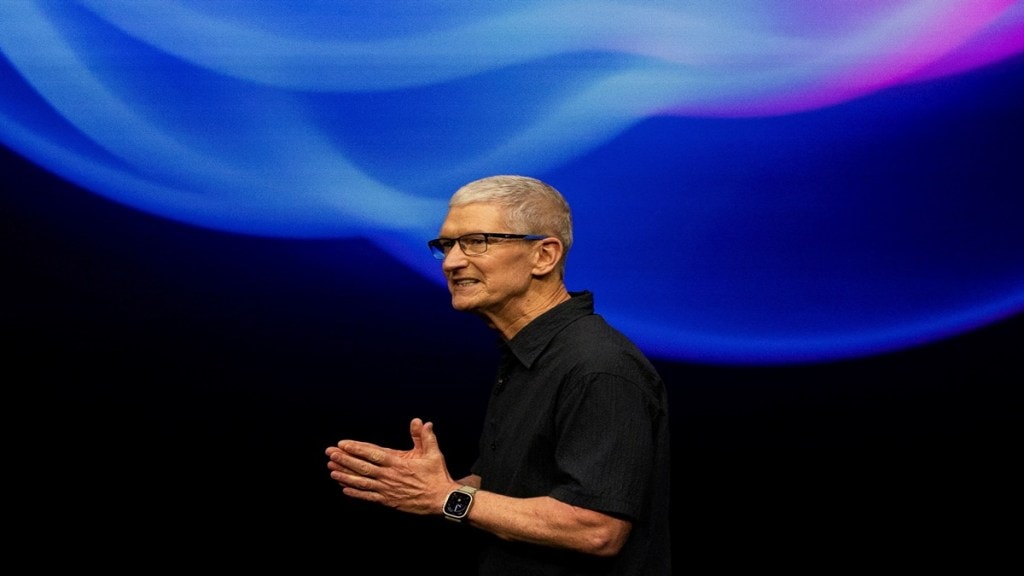In May, Tim Cook made what seemed like a logical statement for any CEO to make, saying that in the quarter ending June, most iPhones sold in the US would be made in India. It made commercial sense because of the ongoing tariff tensions between the US and China.
However, the statement didn’t go down well with US President Donald Trump, who issued a blunt public rebuke during his state visit to Qatar. He made it clear that while he welcomed India making iPhones for its own market, he didn’t want US-bound production taking place outside America. “I said to him, Tim you’re my friend, I treated you very good…I don’t want you building in India” unless it’s to supply the Indian market, Trump said, adding that Apple would be “upping their production in the US” following their conversation.
When the June quarter numbers were reported, Cook’s forecast proved right. India had indeed become the top exporter of smartphones to the US, accounting for 44% of imports in the segment.
Cook’s balancing act
For Cook, this wasn’t just a supply-chain success story. Rather, it was a diplomatic tightrope walk. On the one side was Apple’s growing Indian production base, built over the last five years with the help of the government’s production-linked incentive scheme and integral to the company’s de-risking from China. On the other was the leader of his home market signalling that unless Apple visibly expanded US manufacturing, he could unleash tariffs on the semiconductors and components that Apple’s products rely on.
Cook acted before the problem acted on him. Last week, Apple announced a massive $100-billion addition to its US investments, taking its total planned spend to $600 billion over the next four years. This not only appealed to Trump’s “Made in America” narrative but also ensured Apple would be exempt from any proposed 100% tariff on semiconductors for companies which import or use them in their finished products but do not manufacture in the US. It was a neat piece of corporate diplomacy where Cook was able to keep his Indian operations untouched while insulating Apple from any damaging policy shift in Washington.
This is the sort of negotiation that reminds us that diplomacy is not confined to government ministries. Global CEOs are often de facto ambassadors, representing both the country they hail from and the markets where they have invested heavily. Cook played the role perfectly by balancing nationalism with globalism, giving each side enough to feel it had won.
Where are the other corporate voices?
Unfortunately, this sort of intervention is almost entirely missing in the current India-US trade equation. Trump first announced a 25% duty on Indian exports, which was worsened by an additional 25% penalty for India’s oil purchases from Russia, taking the total to 50%.
Things might not have come to such a pass if the US’s corporate heavyweights, especially those with large Indian operations, had engaged more directly with the White House. These aren’t fringe players. Amazon under Jeff Bezos, Google under Sundar Pichai, Walmart under Greg Penner, Microsoft under Satya Nadella, IBM under Arvind Krishna, Adobe under Shantanu Narayen, Micron under Sanjay Mehrotra, Honeywell under Vimal Kapur, Coca-Cola under James Quincey, PepsiCo under Ramon Laguarta, P&G under Jon R Moeller, Boeing under Steve Mollenkopf, Lockheed Martin under James Taicelt, Abbott under Robert B Ford, Citigroup under John C Dugan, JPMorgan Chase under Jamie Dimon, Goldman Sachs under David Solomon, and Warburg Pincus under Timothy Geithner, all have significant Indian footprints.
Each of these companies benefits from India’s market, engineering talent, or manufacturing base. Yet, except Cook, few have stepped into the role of informal envoy, engaging directly to de-escalate tensions, explain mutual benefits, and find middle ground.
Such influence is not untested. Indian IT services still count the US as their largest market because American clients benefit from the efficiencies they deliver, and the clients in turn have been the industry’s best ambassadors in Washington. Before the 2020 border clashes, Chinese companies like Huawei had succeeded in building much of India’s telecom network, not because they had technology at competitive rates but also because Indian corporate leaders vouched for them and they structured attractive vendor-financing deals.
If US CEOs/chairpersons with deep stakes in India were to engage now, the current stand-off might be softened. Pichai, Nadella, Krishna, Narayen, Mehrotra, and Kapur are leaders who understand the economic interdependence between the two countries better than most trade negotiators. If they don’t step in, both sides risk losing much. Supply chains will re-organise along less optimal lines, and the political space for compromise will shrink. For corporate America, allowing that to happen would be an act of self-harm, given the scale of its investments and revenue streams linked to India.
Cook’s case shows that even in a tough political climate, it is possible to balance competing demands. He didn’t wait for governments to fix the situation. Instead, he stepped in, moved resources, and crafted a narrative that satisfied both constituencies.
It is not too late for others to follow suit. If the CEOs of America’s India-linked giants make the effort, they can help steady the relationship while official negotiators continue their work. The curious case of missing American CEOs needs rectification, and the time for it is now.

